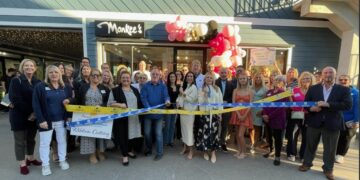Infill development projects keep happening across Southwest Florida. A downtown Fort Myers apartment complex exemplifies the trend.
First Street Apartments are being planned for the corner lot that until recently belonged to Grace United Methodist Church. Zimmer Development, based in Wilmington, North Carolina, intends to build a 275-unit apartment complex with studio and one-, two- and three-bedroom units. There will be a five-story parking garage and various amenities as well.
Zimmer paid $7 million for the 4.47 acres just east of Fort Myers Regional Library. The lot borders First Street to the north, Fowler Avenue to the east and Royal Palm Avenue to the west.
Part of the land is believed to have been part of the original fort for which Fort Myers was named. The city asked Zimmer to do an analysis of the property to make sure there were no issues with building over archeological remnants.
The land has been on the market for more than four years and had been under contract twice prior. Changing market trends helped broker Max Molloy and his colleagues at Fischler Property Company to entice Zimmer for another area apartment project. Zimmer previously developed the 432-unit Oasis at Surfside in Cape Coral. It’s also working on the 296-unit Inspiration at South Pointe off College Parkway in Fort Myers.
The city of Fort Myers approved an $11 million tax-increment-financing (TIF) program for the downtown apartment project, to be paid back over 20 years.
Grace United Methodist will retain ownership of .7 acres adjacent to the property on the Royal Palm Avenue side, next to the library. The church that had been on the property was razed, as it was filled with asbestos, said Jorge Acevedo, pastor at Grace United Methodist.
“We decided to hold on to a little piece of the property,” Acevedo said. “We didn’t expect it to take five years. So much has changed. We don’t know what we’re going to do with the property. We haven’t made these decisions yet.”
Molloy said this would be the perfect place in the city for infill development.
“Projects like this can’t happen without the city’s help, because of the land costs and the construction costs,” Molloy said. “You’re starting to see these come to fruition.”





